Jenson Button’s ballistic drives
Despite being a world champion, Jenson Button is a misunderstood racer. But as these 10 great cameos demonstrate, at his best there was simply no one else like him
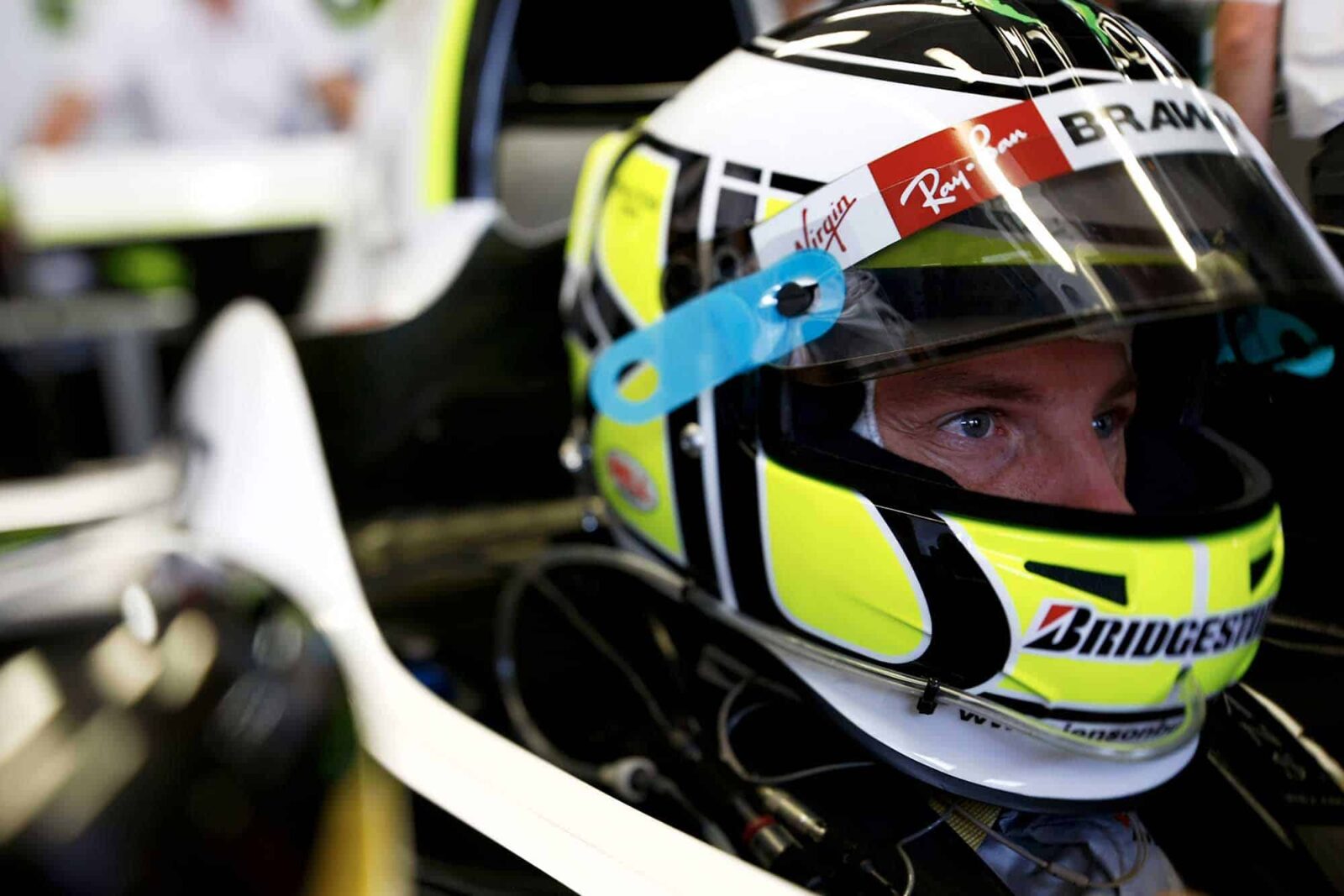
Motorsport Images
Jenson Button’s talent is one of the most misunderstood among F1 drivers. His ability is so nuanced, a total outlier from the approximate grading one could make of the others, that it’s led to the misconception that he was simply a right place/right time world champion. But that’s to ignore the extraordinarily high level of his best drives – performances that rank with the best of the greats. On the other hand, the average performances over his 17-year F1 career probably place him as a very good rather than truly great driver. But he has been so much more than only that. Bear in mind also that in the 17 years of that career, he has been in a truly competitive car for only four of them.
Abu Dhabi this year may well turn out to be his final Grand Prix. He might yet make a comeback in 2018 as a super-fit, super-motivated and relatively inexpensive 38-year-old should Fernando Alonso decide against continuing after the end of his current contract. But let’s for now assume Melbourne 2000 and Abu Dhabi 2016 will be the book-ends of Button’s F1 career and recall the outstanding moments that prove he was something well beyond the ordinary.
2000 USA, Indianapolis

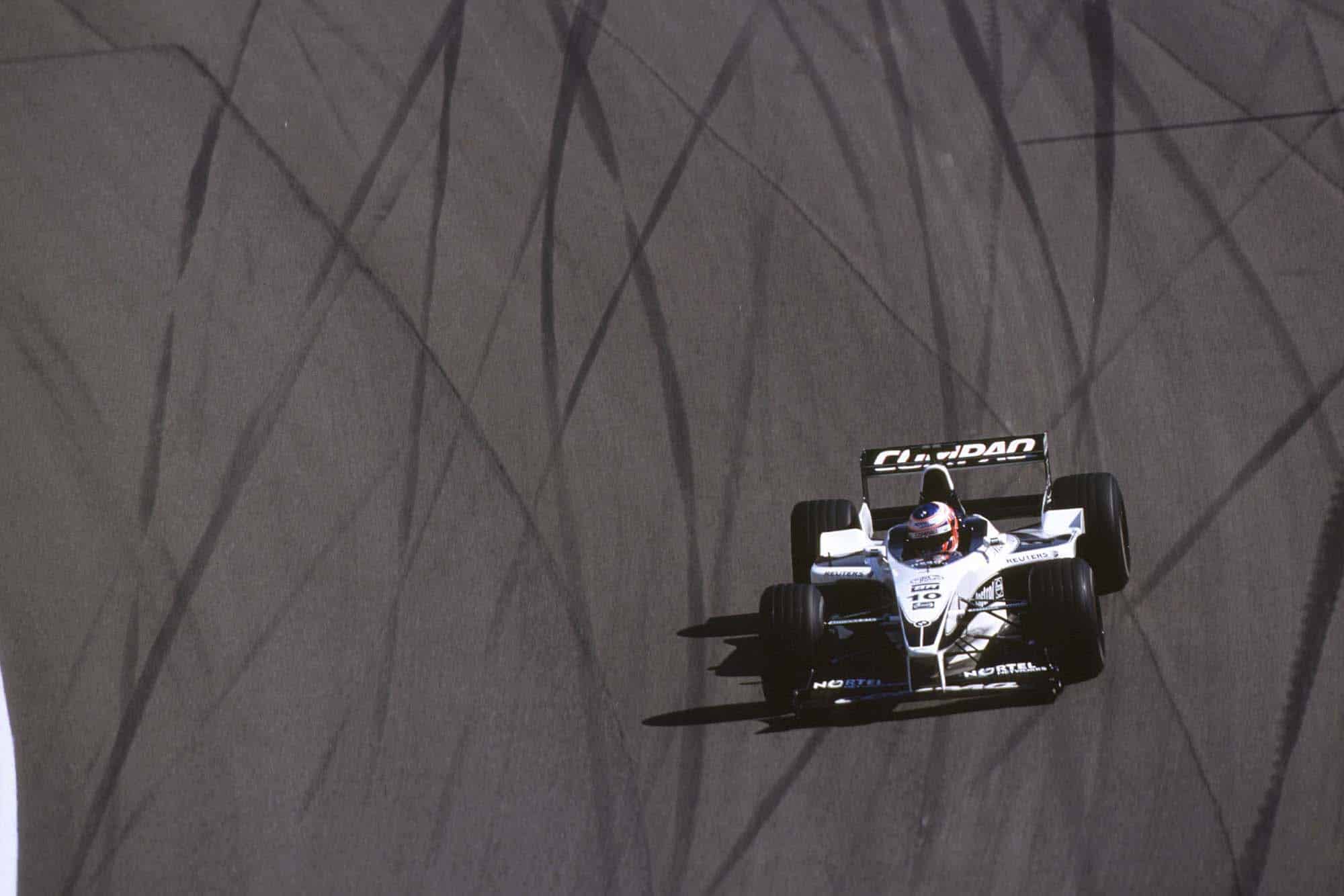
In his rookie season, straight from a single season of F3, Button was in reality a little under-equipped for F1. But he grabbed the opportunity and this race towards the end of that season showcased his very special ability in tricky, changeable conditions. The rain had stopped as the race began but everyone was on wets; the infield was still extremely slippery but the banked section and main straight were drying fast. Sixth at the end of the first lap, Button had his familiar special feeling in such conditions. On lap two, held up by Jarno Trulli’s Jordan, he went to pass. Trulli refused to give way, they clashed and were each forced to pit with punctures. With nothing to lose, Williams put Button on slicks. Within a couple of laps he was not far off the pace of the best wet-tyred cars and within five he was flying. In response, there was a flurry of pit stops as teams took Button’s times as indicators that the track was ready for dries. Most of the grid came in between laps five and eight. Turns out it was way too early. Once onto dries no one could get near Button’s times. Ferrari, having brought Barrichello in as guinea pig, left Schumacher out there, leading the race, building up a huge margin. The ideal time to change turned out to be between laps 13-16. Three-quarters of the field had been fooled into pitting about eight laps too early by Button’s extraordinary feel in these conditions.
Jenson’s view “It’s always tough driving a 700bhp car on slicks in the wet, but I guess that was the first moment I realised I could drive in certain conditions that others couldn’t – even the best in the world. When certain senses were taken away they couldn’t work in those conditions like I could, because I drove in a different manner that hurts me in certain ways – tyre temperatures and stuff – but I could feel my way around a circuit rather than using my eyes.”
2004 San Marino, Imola
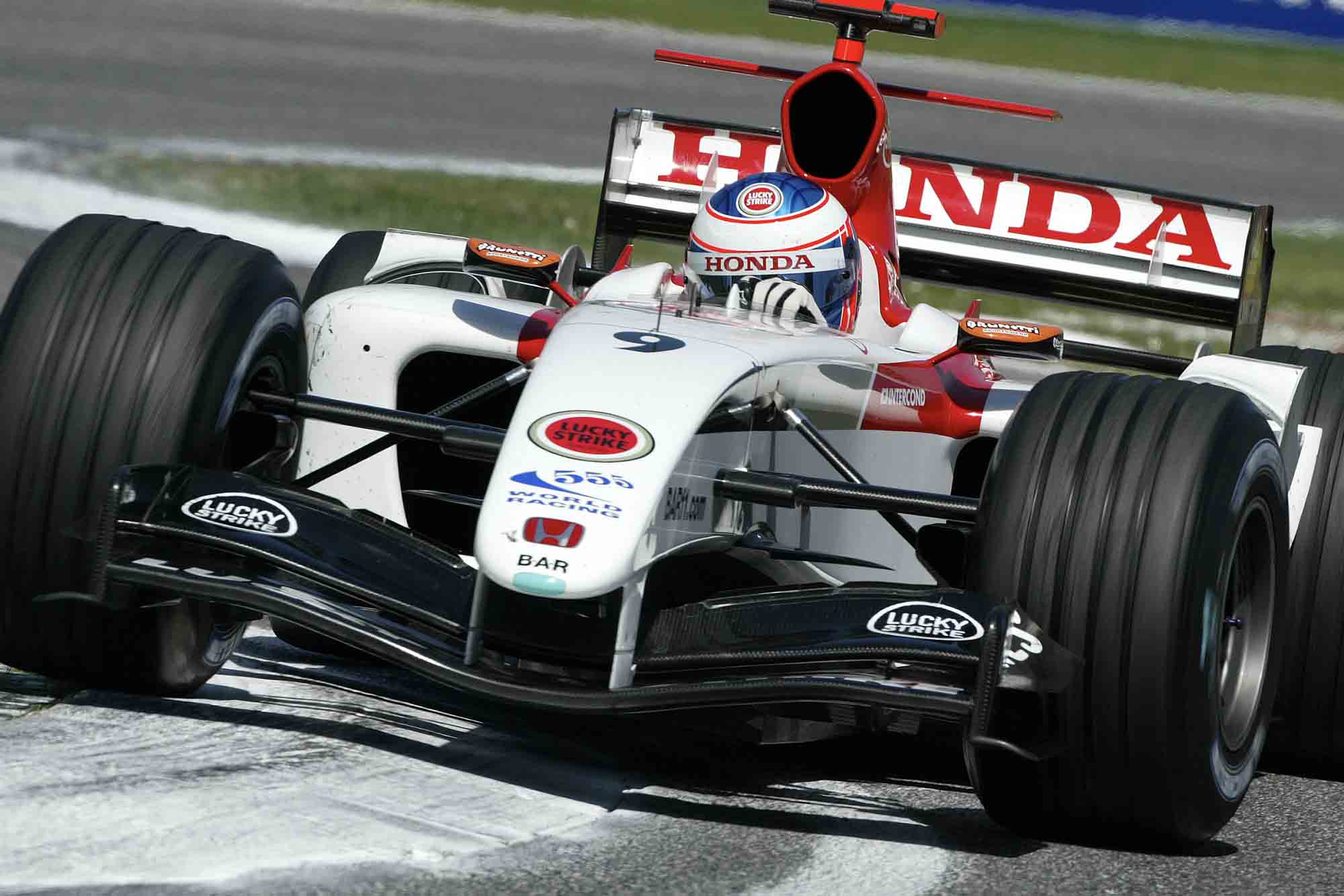
The BAR-Honda 006 was the second-best car in F1 that year. But it was still about 1sec per lap slower than the Ferrari F2004. But at a cool Imola, the softer compounds made possible by the Michelin constructions on the BAR allowed it a single-lap grip advantage over Ferrari’s Bridgestones. However, it was a much less robust tyre than the Bridgestone, needed much more management over the qualifying lap. A stunning Button time set the benchmark for Michael Schumacher’s subsequent lap in the Ferrari. The Bridgestones allowed Schumi to attack the first two sectors harder than Button and by the time the Ferrari arrived at Variante Alta he was 0.2sec below Button’s marker. He then attempted to take Button levels of commitment into those high-speed kerbs but the stiffer-walled Bridgestones were not as forgiving and in an instant Michael was wrestling a 150mph tank-slapper. He had just lost pole and it was the pressure of Button’s superb lap that had done it. In the race there was never realistically going to be a contest. The Ferrari was much the faster car over a sequence of laps, but Jenson could at least rail against that reality. He won the start and completed the opening lap almost three seconds clear of Schumacher, taking full advantage of the greater initial grip of his tyres.
“It was like it was raining in front of me and dry for him,” said an admiring Schumacher afterwards.
But even the Michelin-shod Juan Pablo Montoya was staggered at Button’s initial pace. “He was unbelievable on that first lap. It was like he was on rails.” And encapsulated in that is Button’s beautiful high-momentum, high-precision way of working a car. He’s perhaps too easily thrown off his game when his car has rear instability upon corner entry – the downside of a sensitivity that makes him so devastating in changeable track conditions – but with a car balanced the way he likes it, he can be untouchable. Had Montoya succeeded in going around Schumacher’s outside at Tosa before the Ferrari’s tyres were up to temperature, Button would have had a realistic chance of victory. But Schumacher forced the Williams off track, pulled away and inevitably leapfrogged the Honda at the stops. Nonetheless Button’s second place represented an afternoon of on-the-limit perfection. It was the first full demonstration that, with the right car beneath him, he was capable of Stewart– or Prost-like domination of a Grand Prix. This was Button finally in full flower. But would the right car ever come along?
Jenson’s view “Qualifying was one of those laps I really hooked up, where you don’t leave anything on the table. I’ve had qualifying sessions like that where I’ve been 11th, like at Spa this year. We knew we had good pace through practice, but we didn’t want to show it. Through the last two left-handers I would just cruise. We knew we could get pole. At the start there was so much excitement, so much emotion, that when the lights came on I’d completely forgotten the sequence! I went through it massively quickly and got one of the best launches I ever had.”
2006 Hungary, Hungaroring
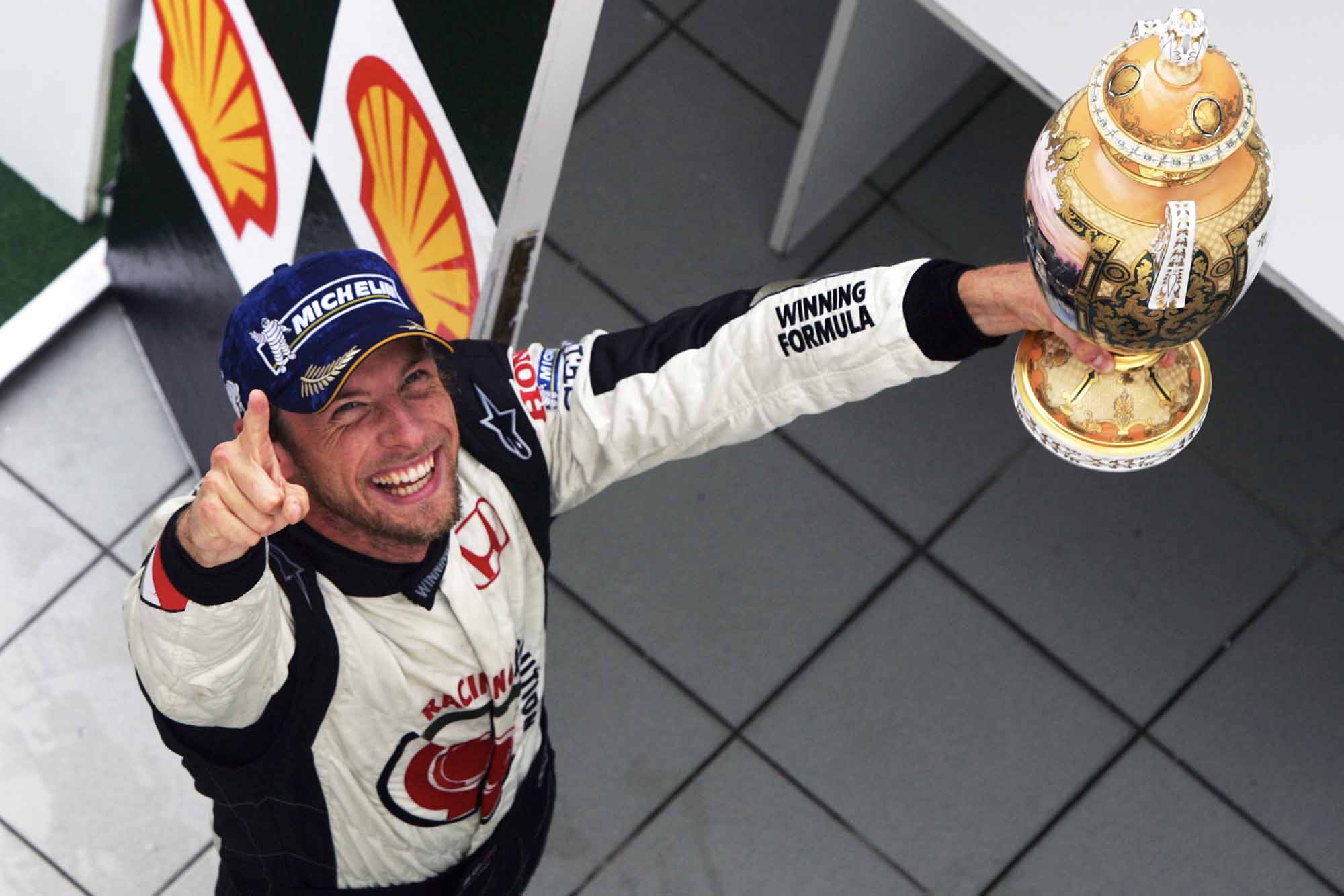
The occasion of Button’s first Grand Prix victory. It’s sometimes recalled as fortunate in that Fernando Alonso was forced to retire his Renault from the lead after an equally magnificent drive when his wheel came adrift after a pit stop. But it was more complex than that. Alonso and Button were the stars of this show, up from 15th and 14th grid positions to leave everyone else far behind. Taking full advantage of the superiority of their Michelin intermediates on a damp day, they delivered searing performances but in very different ways.
Alonso was more impressive in the opening laps, staking all on placing himself in ambitious places, ambushing the others playing themselves in more cautiously, scintillating moves all the more impressive given that he was fighting for the world championship. Button was more circumspect, the Honda not as good off the grid as the Renault, with less traction and a peakier engine. He let the race settle first, but when the moves came they were clinical: Heidfeld on the second lap, then Coulthard, Massa, Fisichella, Michael Schumacher in quick succession. By the time Button reached second place Alonso was 20sec up the road, even more after JB was brought in for fresh tyres. Game over. But then a safety car. Alonso got in and out still in the lead, but now Button was right with him. Except they had the lapped Ferrari of Felipe Massa between them. As racing resumed Alonso sprinted away while Massa, trying desperately to get heat into his Bridgestones, was stubbornly obstructive. It took three laps for Button to pass – by which time Alonso had pulled out nine seconds. Game over, surely?
Except – in just two laps Button had that 9sec down to 5sec. He was travelling at a different rate to anyone, even the other Michelin users. Alerted to Button’s progress, Alonso upped his pace – but still Button closed at between 0.5sec and 0.75sec per lap. Before it was too late, Renault brought Alonso in and switched him to dries. Honda couldn’t yet risk doing the same as its car took much longer to heat up the rubber than the Renault. And that was what was probably going to decide things in Alonso’s favour. But then Fernando’s wheel departed – and the clouds parted for Button’s victory in his seventh season. It had been a virtuoso performance. Alonso had all the early eye-catching moves, but it was Button who had the truly amazing pace in the wet.
Jenson’s view “Lots of emotions– and there was frustration on Saturday with an engine failure. I qualified fourth but had to start 14th. It was a fun race, with so much fighting. We had better tyres than Ferrari, but still the fight with Michael was special. Fernando’s wheel came off and it would have been interesting if that hadn’t happened. We were catching him fast. Maybe our dry pace wouldn’t have been as good as his, I don’t know. People say that’s why we won, but they don’t see the last five or six laps before that. When I was leading by 35sec I was thinking, ‘I want this to last forever.’ I really didn’t know when the next one would come.”
2007 Europe, Nürburgring
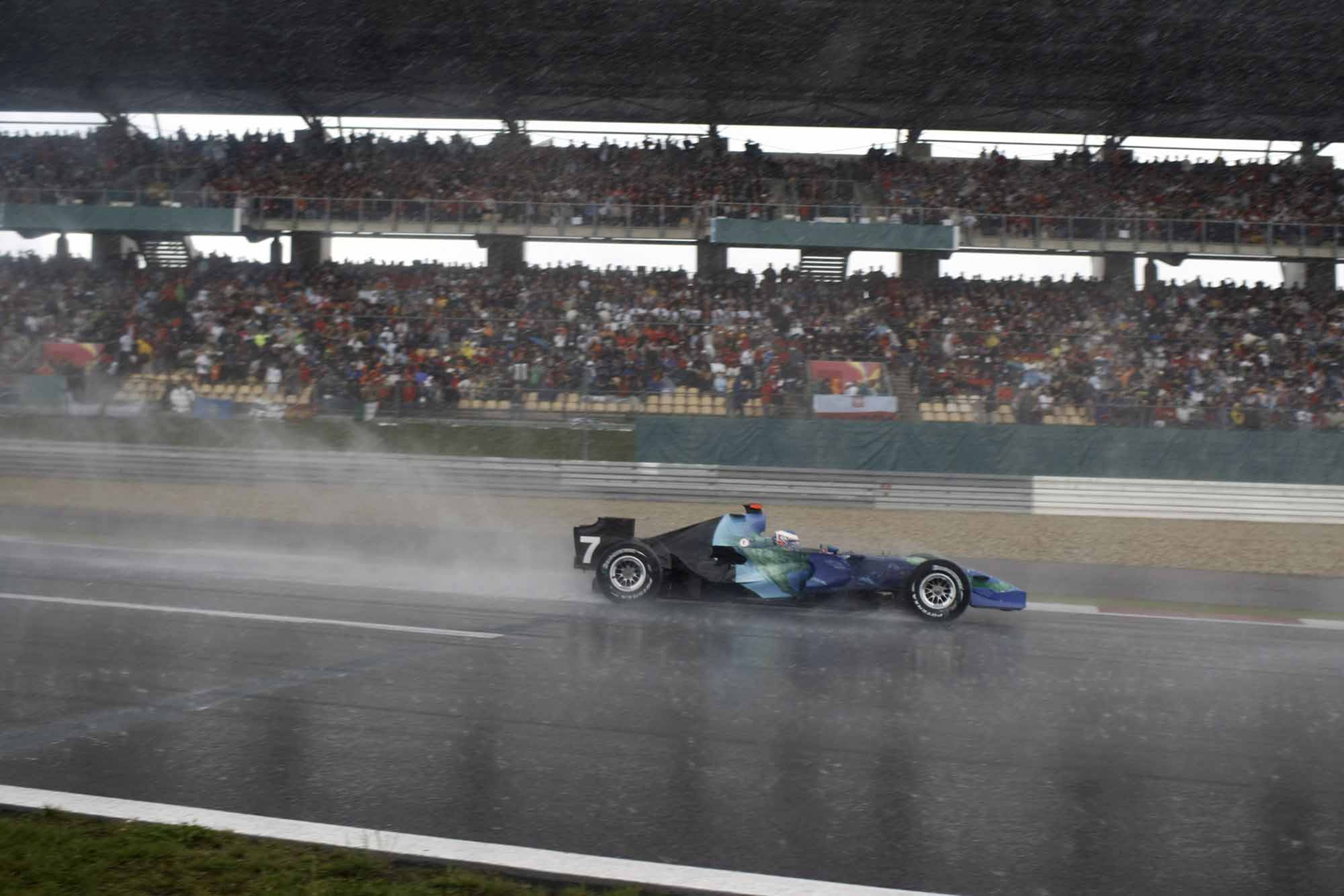
The Honda RA107 was a dog, lacking grip, traction and balance. Button qualified 17th – about normal. But on race day it rained. And for three minutes Button worked a magic that left you wondering what all the others were doing. Then, looking down to change a steering wheel setting, he was caught out by a lake that on the previous lap had been a mere puddle. Over and out. It made it look like those stunning laps had been imprudent, but actually his departure came from a minor error of judgment that had nothing to do with the pace he’d been setting. That’s just how much more at ease he was than anyone else as the heavens opened with the field having already started on slicks (apart from rookie Markus Winkelhock).
Button was 20th into the first turn, but as they reached the track’s southern tip a black cloud dropped its load. Button’s lightness and surety of touch, the direct line he has to the car’s movement, made this child’s play. He overtook 11 rivals in the next few corners as they slid to the pits for wets. During the ‘out’ lap he passed another five cars, going 1.8sec faster than the next best. He was already fourth and catching eventual winner Alonso. Then he looked down. They say, don’t they, that you should never look down. But don’t look back in anger either. A brief but electrifying two laps.
Jenson’s view “I felt the conditions and it’s so nice in those situations, like you’re in a different race. It’s similar to indoor karting against a load of people who haven’t got a clue, even though you’re against the best drivers in the world! You’re basically just picking your line so you’ll lose less speed when you pass them, rather than wondering whether you will pass. I would’ve had to pretty much stop to get though that lake and it was just too late to do that.”
2009 Monaco, Monte Carlo
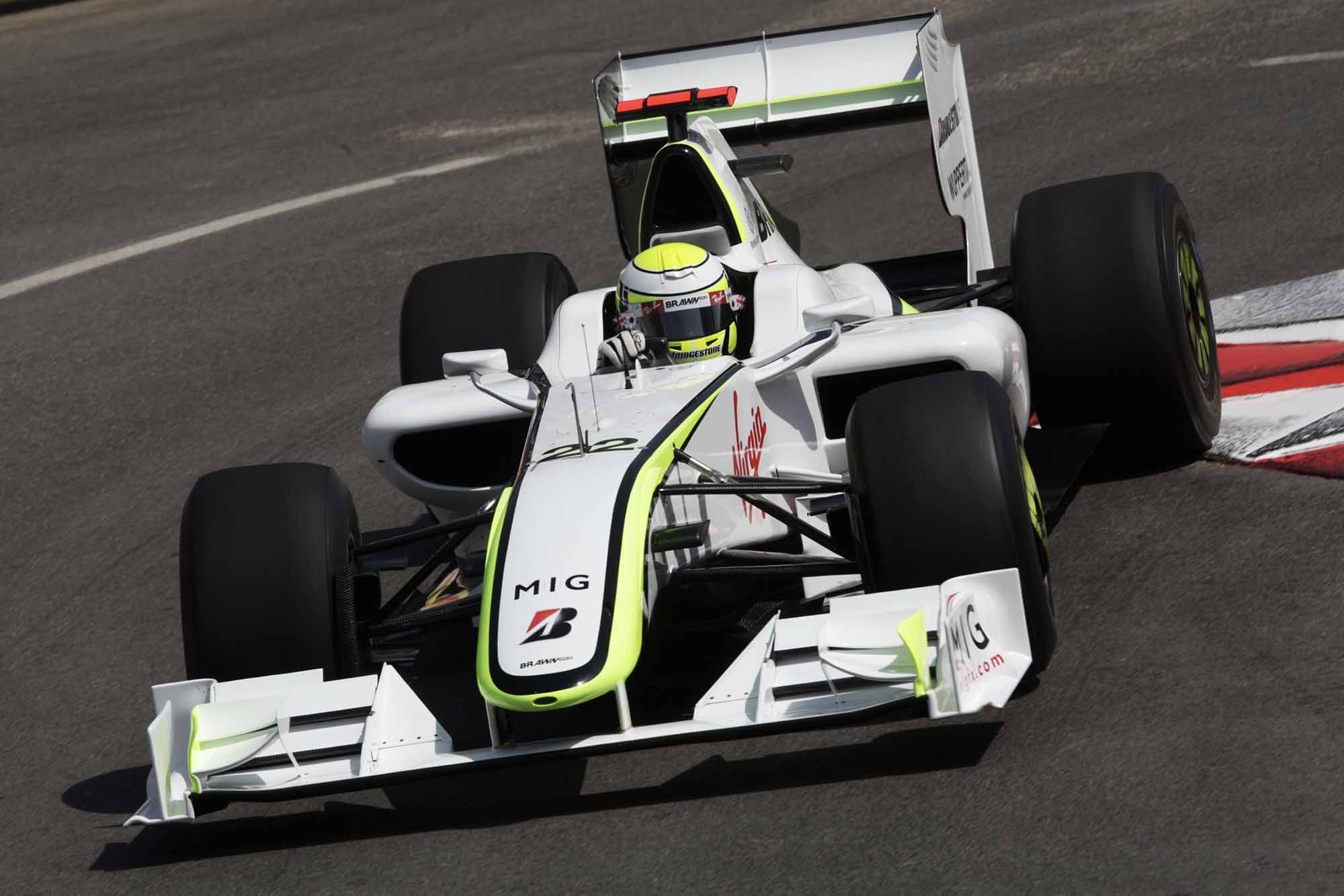
Which to choose of those six victories from the first seven races of ’09? Each was drenched in class. Spain had been special, taking the car by the scruff of its oversteering neck as the tyres degraded to make the two-stop (which he’d been forced onto by traffic) beat team-mate Barrichello’s faster three-stop. But Monaco was something else. On his pole lap he was faster with 50kg of fuel on board than he’d gone on low fuel in Q2. Barrichello had been faster all weekend – and then Jenson pulled that out of the bag, leaving the Brazilian stunned. “It’s strange,” JB said later. “I feel like I’m finding this extra grip. I’m sort of floating through the corner and suddenly I can carry so much speed through every part of the corner. It just sort of comes to you and I don’t really know where from. Afterwards the lap is very difficult to explain because I have almost no recall of it.” He followed it up with a fine victory, easing his delicate super-soft tyres out way longer than anyone else, the foundation of a perfect afternoon that capped a perfect weekend. Grand Prix driving as an art form.
Jenson’s view “Monaco was all about the qualifying lap and then controlling the tyres in the race. They grained a lot. I was looking after the rears, making sure they didn’t grain.”
2010 China, Shanghai
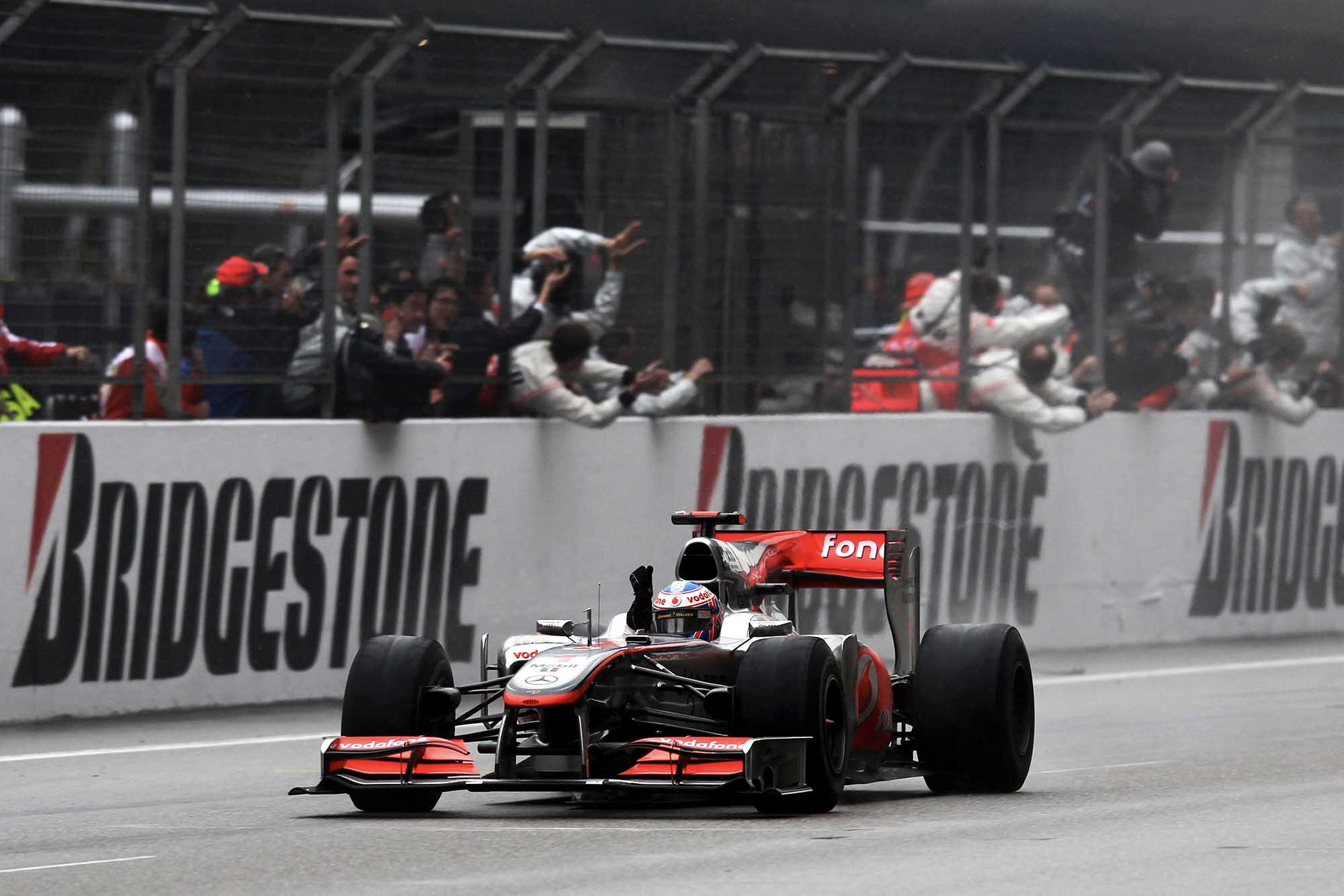
He’d outqualified his new McLaren team-mate Lewis Hamilton, won the start against him and extended his lead over him by decisively choosing to stay on slicks as the drizzle arrived. Lewis? He’d obeyed instructions to pit, then been forced to do so again for a corrective stop back onto slicks. Button was leading the race, 50sec ahead of Hamilton, but a big chunk of that was wiped out by a safety car as everyone then pitted for inters. By lap 39 of 56 Button and Hamilton were first and second on new intermediates and the rain was coming on heavier. A straight wet-weather driving duel for victory in identical cars.
There were unknown grip levels corner to corner as the rain increased, abated, then came on again, Hamilton hidden somewhere in the spray behind. “Give me the gap to Lewis,” he radioed. “I can’t see him.” It was a little under 4sec. As they lapped backmarkers, Hamilton got the gap down to 1.2sec. Did Button crumble? No, he reeled off a perfect sequence of laps, within 0.1sec of each other, all 0.5sec faster than his team-mate could conjure, a stunning series of combination punches that finished off Hamilton.
Within a few more laps Hamilton, his front tyres worn, was forced to surrender. Button had aced him in the wet. It would be a similar story a couple of years later as the rain came down in the early laps of Interlagos; Hamilton ahead but twitchy slides everywhere as he fended off Button on his tail, Jenson just looking for a way by. Once he found it, around the outside of Turn Five, Button pulled easily away. In uncertain conditions, he was simply faster than Hamilton. And probably anyone else.
Jenson’s view “The call to stay out was a moment of feeling rather than seeing, which a lot of drivers don’t do. It’s tempting to see rain and think, ‘It’s time to come in.’ But you need to feel the circuit. The safety car gave Lewis 50sec, like in Brazil 2012. To get a second win for the team four races in did a lot for the longevity of my stay.”
2011 Canada, Montreal
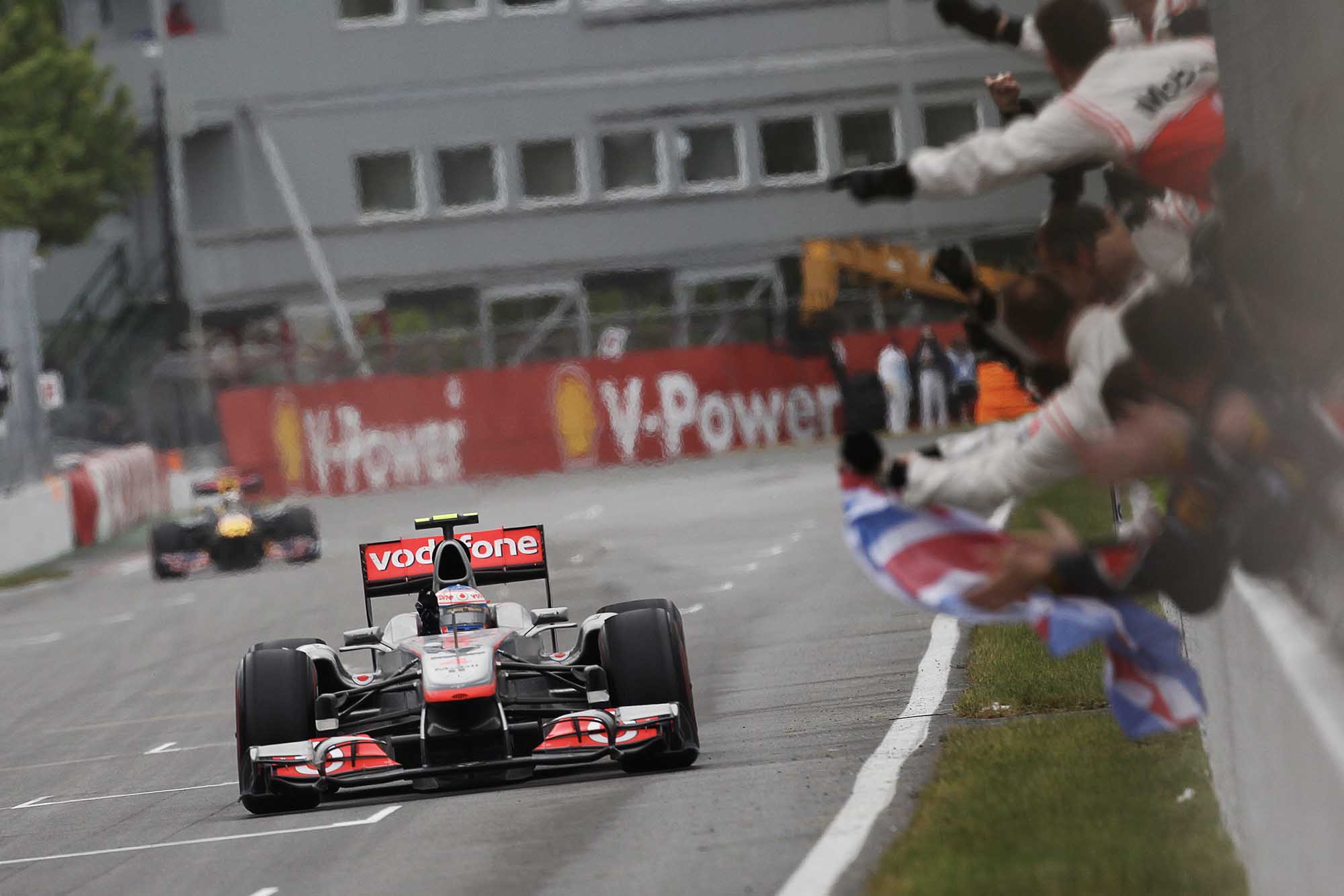
“We weren’t just last,” recalled Paddy Lowe of where Button’s McLaren was when the final safety car came in with almost 60 per cent of the distance already gone, “we were worse than last. We hadn’t even caught the safety car queue and were 10sec behind the penultimate car.” He’d had two collisions – feisty territory-fighting ones with Hamilton and Fernando Alonso – a puncture, five stops and a drive-through penalty. Worse than last with only 40 per cent of the race left. Yet he won. Button overtook 13 cars in the remaining 28 laps, the final one – Vettel’s race-leading Red Bull – five corners from home on the last lap.
It was an almost fairtytale performance but at its core was a very real skill of Button’s. Totally at ease in the variable conditions, he had the confidence to push, getting heat into his tyres on a day when that proved elusive to almost everyone else. In the crucial moments, he was hugely faster than anyone. Up to fourth with 15 laps to go, he was the fastest car on the track by the margin of 1.3sec. A final safety car brought him onto the tail of the dicing Schumacher and Webber and, once past them, he chased down Vettel’s 5sec advantage with astonishing ease, taking 1.5sec each lap out of him until he was on the Red Bull’s tail and applying the pressure. “That was one of the all-time great wins,” said McLaren’s Martin Whitmarsh, “and it was 90 per cent driver, 10 per cent car.”
Jenson’s view “Everything that could have gone wrong seemed to. As I caught Seb he began to push harder and was having moments as he took more risks. He kept going wide in that particular corner and, on the final lap, it was enough. He made the mistake because I pushed him. However bad it gets, never give up.”
2012 Belgium, Spa-Francorchamps
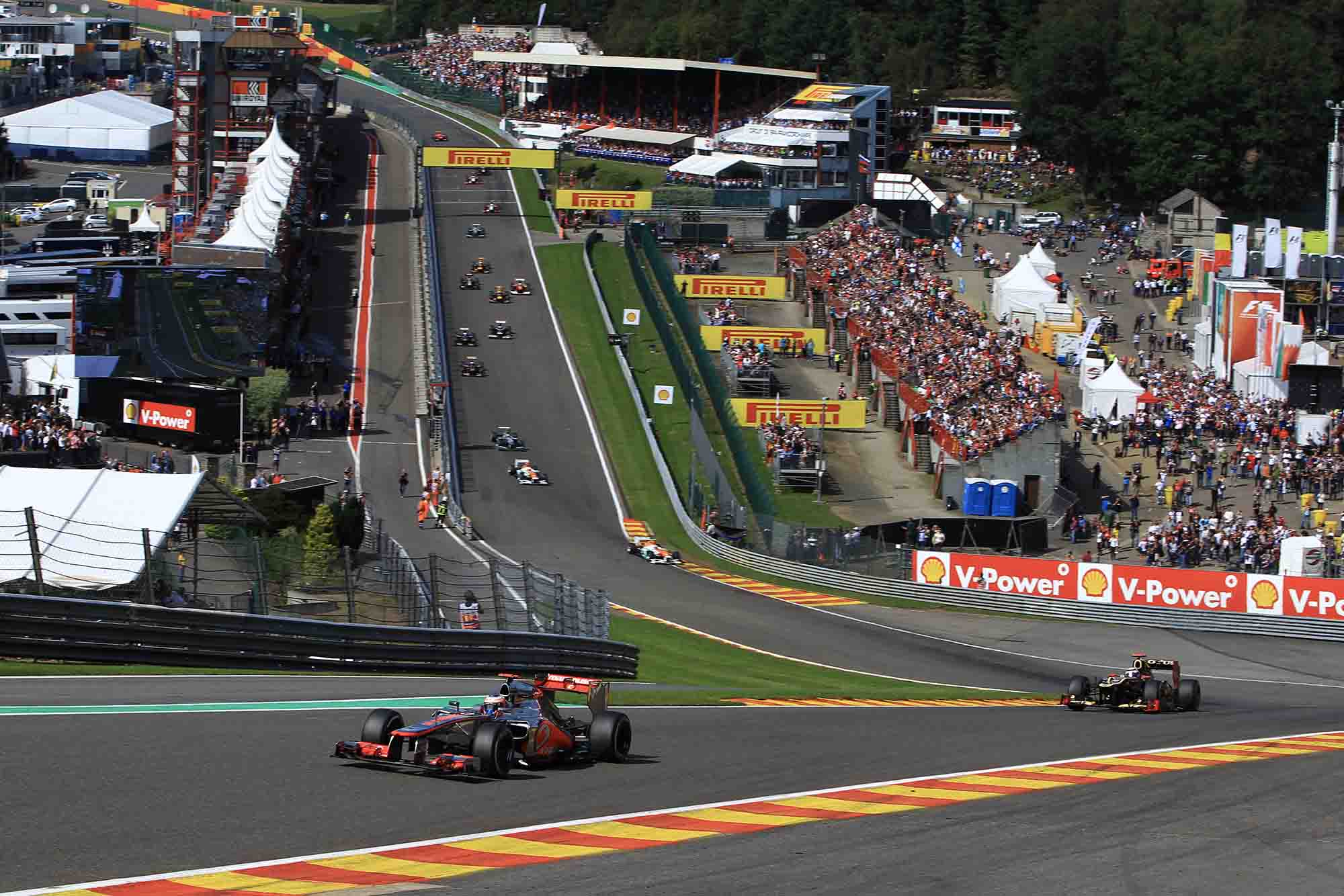
A stunning pole position, 0.9sec faster than team-mate Hamilton, a start-to-finish victory, not even losing the lead at the pit stops, a 13sec winning margin over Sebastian Vettel’s Red Bull. Button had found the sweet spot, that narrow place of car balance, narrower than that of most other drivers – but probably higher, too. Give him a competitive car that’s perfectly balanced for his smooth one-sweep steering and beautifully synced throttle movements and he could be unbeatable.
Spa on that September day was one such occasion, recalling some of his best Brawn drives. His dominance of the weekend probably played its part in Hamilton going down a different set-up route with higher downforce, something that just exaggerated Button’s superiority and led to Hamilton ill-advisedly tweeting telemetry details.
Jenson’s view “Probably my best race weekend. I started with a good car and just fine-tuned it as I went along. It was about understanding where the circuit grip level was going to go. We did so much with gearing. I was on the limiter for 3.5sec at the top of the hill. We used low ratios to give us a boost at corner exits and through Eau Rouge, so you were on the limiter a long time but you were only going to lose a few kph through that and there was more time to be found from the acceleration. The low-downforce wing didn’t just produce less drag but actually gave more downforce in yaw than the high-downforce wing. It was more stable, more consistent. Lewis’s tweets? They were simulator comparisons – it wasn’t even real data!”
2014 Brazil, Interlagos
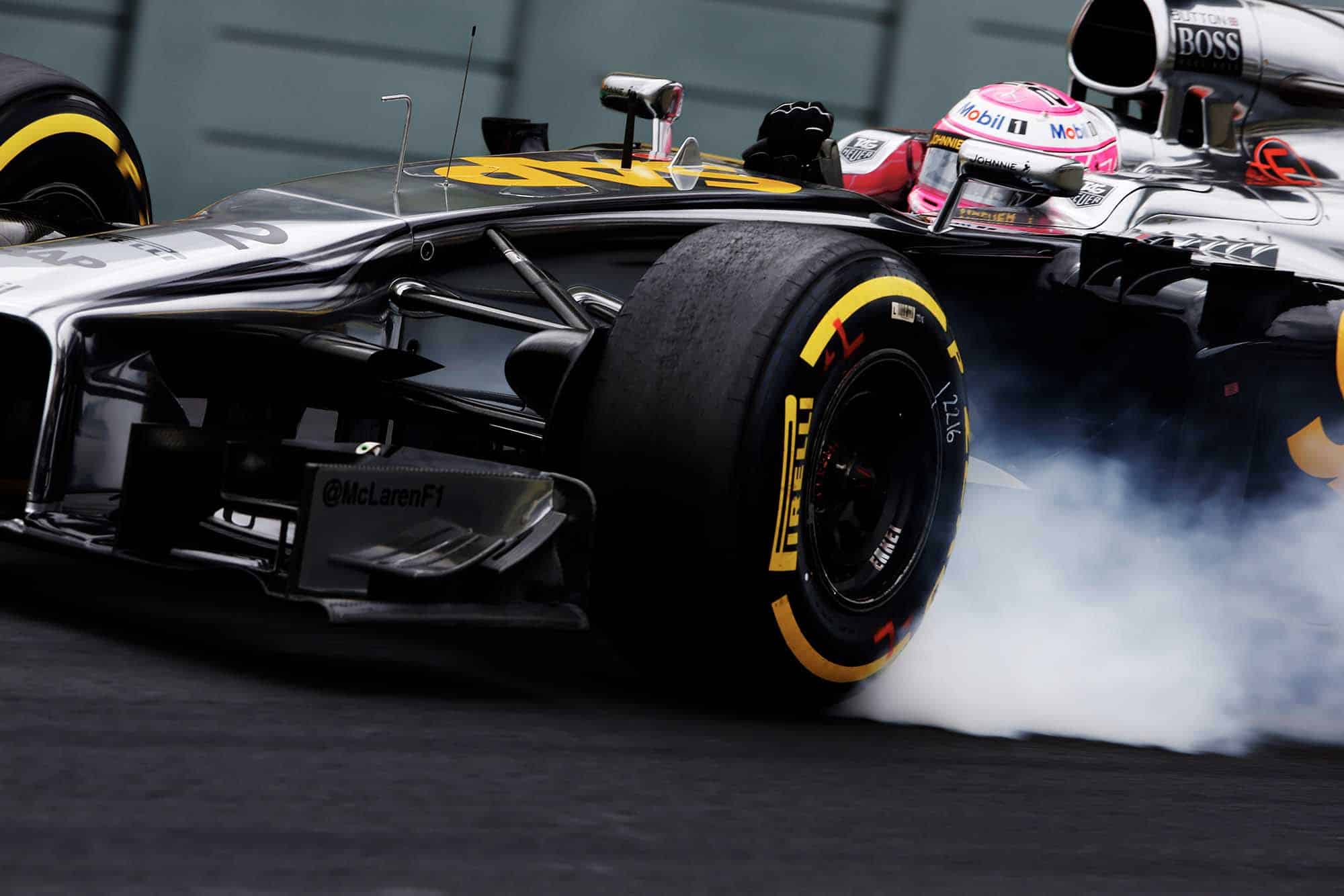
McLaren’s first hybrid car was no match for the similarly powered works Mercedes and Button had done well to qualify in fifth, within 0.9sec of Nico Rosberg’s pole. His race was set to be with team-mate Kevin Magnussen, the two Red Bulls and Alonso’s Ferrari. But he had a plan to escape them. If he could just hang onto the fast-down-the-straights Williams of Valtteri Bottas, he could use its tow to enable his DRS every lap, allowing him to use less fuel, which in turn would make available more power at the end if needed.
The Williams was a faster car, but using the McLaren’s drag reduction system without actually trying to overtake, Button was able to hang onto it, taking advantage of his direct rivals being stuck behind the longer-running prime-tyred Lotus of Romain Grosjean. Magnussen, Vettel, Alonso and Ricciardo found themselves outfoxed by the wily old hand and, after Bottas dropped out, Button was left with a fourth place that massively flattered the car, defeating the faster Red Bulls as well as his team-mate. Furthermore, if McLaren hadn’t bizarrely given pitstop priority to Magnussen, Button could have snatched third from Felipe Massa’s Williams.
Jenson’s view “I used the DRS really well. I’ve done it a few times and was doing it in Bahrain this year. If you can just get in that DRS zone, pulling you along, you can look after your fuel and tyres and use them elsewhere. It makes a big difference at some tracks. It’s about picking how much electric power you want to use to put yourself in a DRS zone. I’ve always enjoyed playing around with that.”
2016 Austria, Red Bull Ring
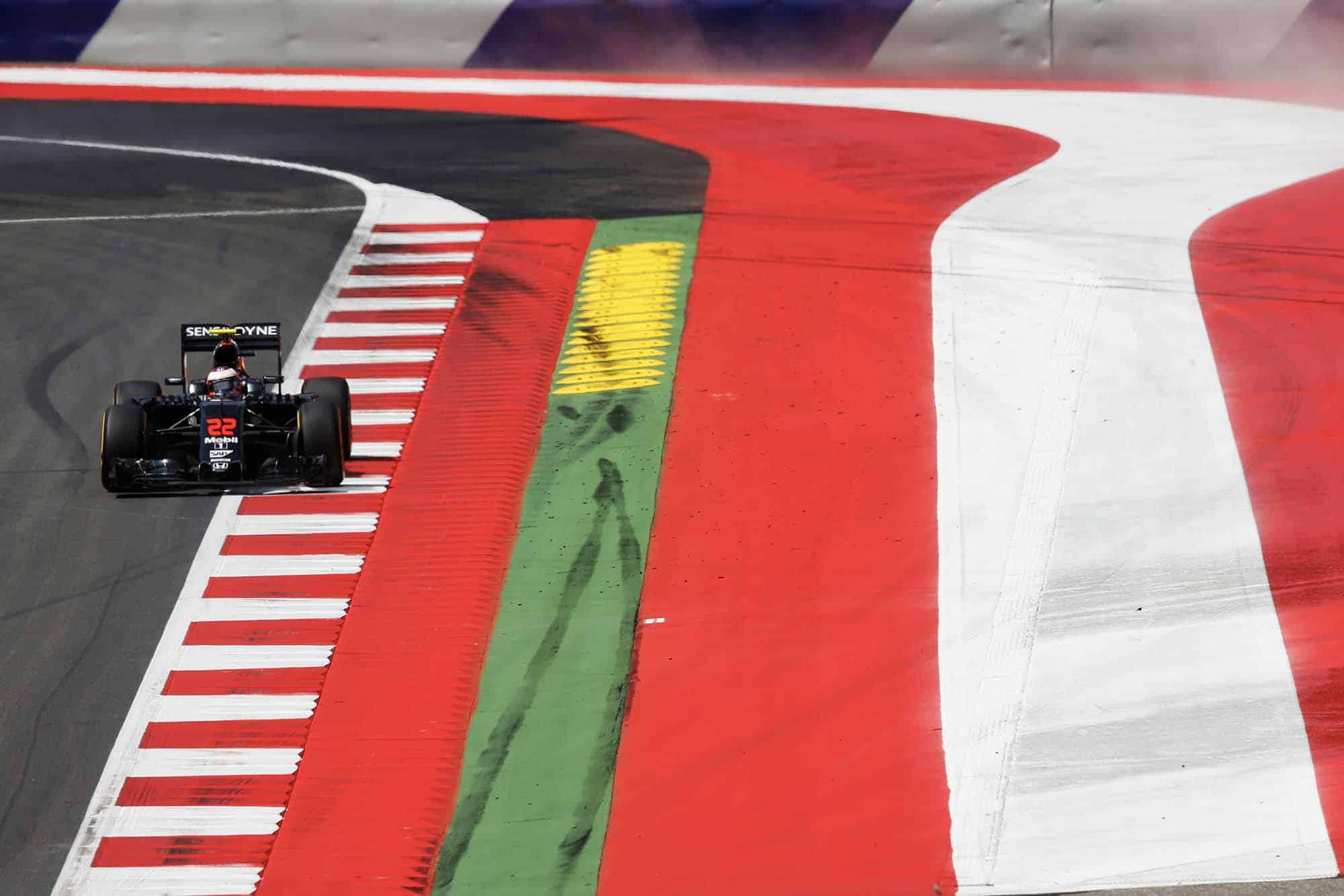
It was only in the final moments of Q3 that the track dried and drivers pitted for slicks. Until that moment, with everyone on inters, Button’s underpowered McLaren-Honda was second, only Hamilton’s Mercedes having gone faster. That is not the performance of an ordinary driver, nor one going through the motions 17 years into his career.
He ended up fifth but others’ penalties put him third. He ran second to Hamilton in the early stages, but in the dry it was inevitable he couldn’t run with Mercs, Red Bulls and Ferraris. He did finish sixth, though – which was a lot higher than the car warranted.
Jenson’s view “It just shows what a difference position makes. Starting third, running second, no one overtook me for eight laps. You gain so much race time. It was inevitable what was going to happen, because we were losing out in straight-line speed so much to the Ferraris and Red Bulls. Definitely the best race of 2016 – we just read the situation well.”

